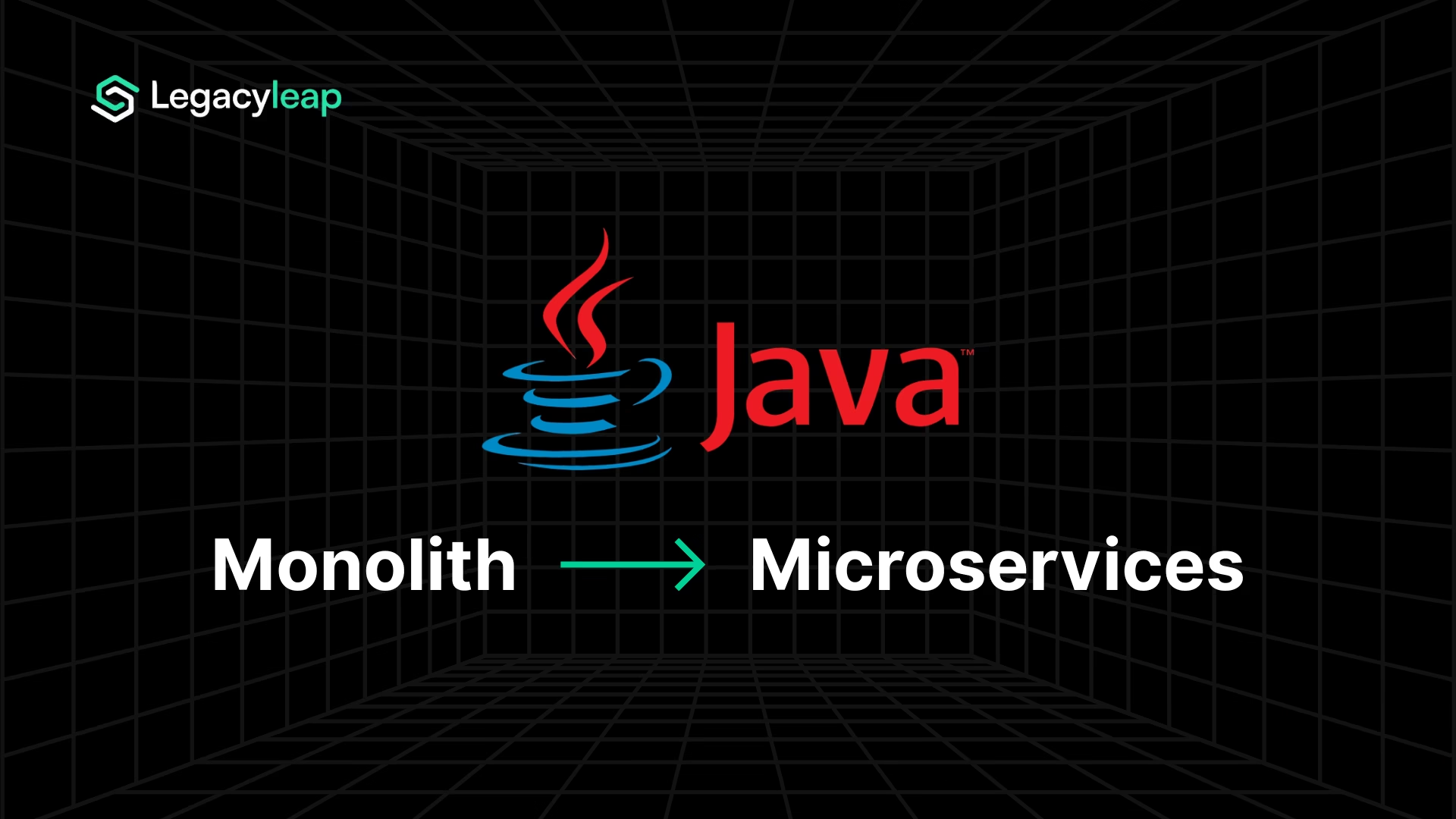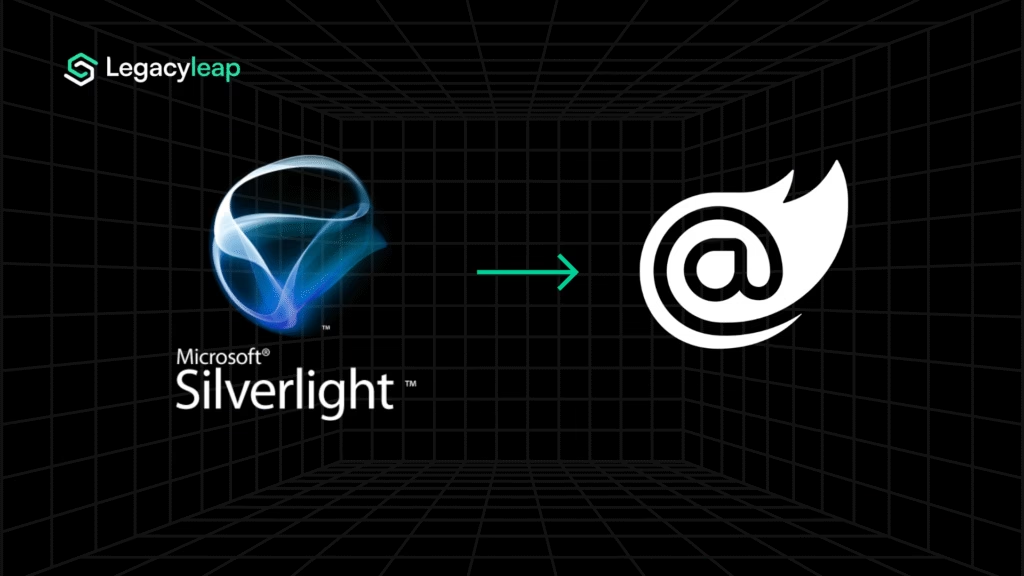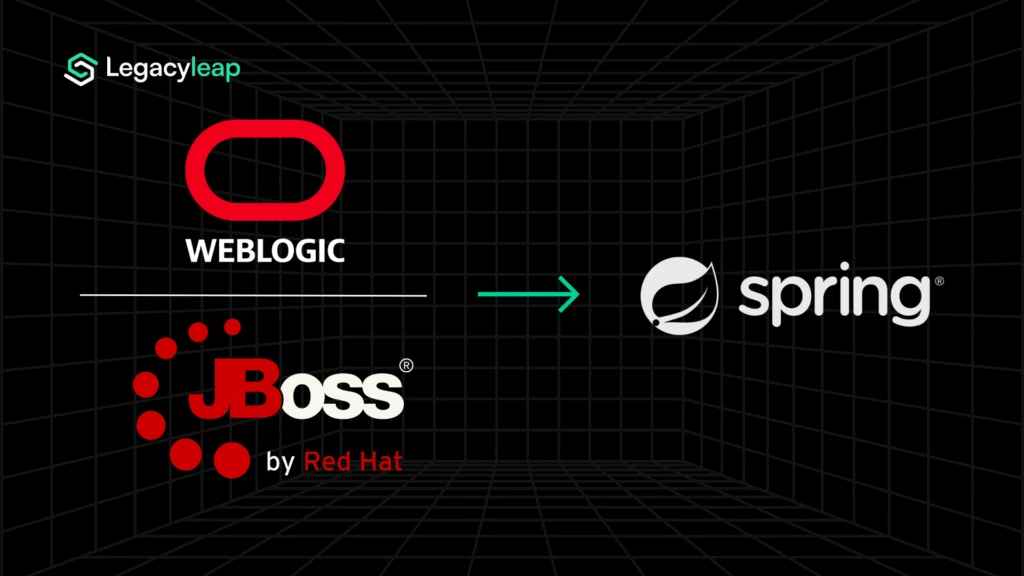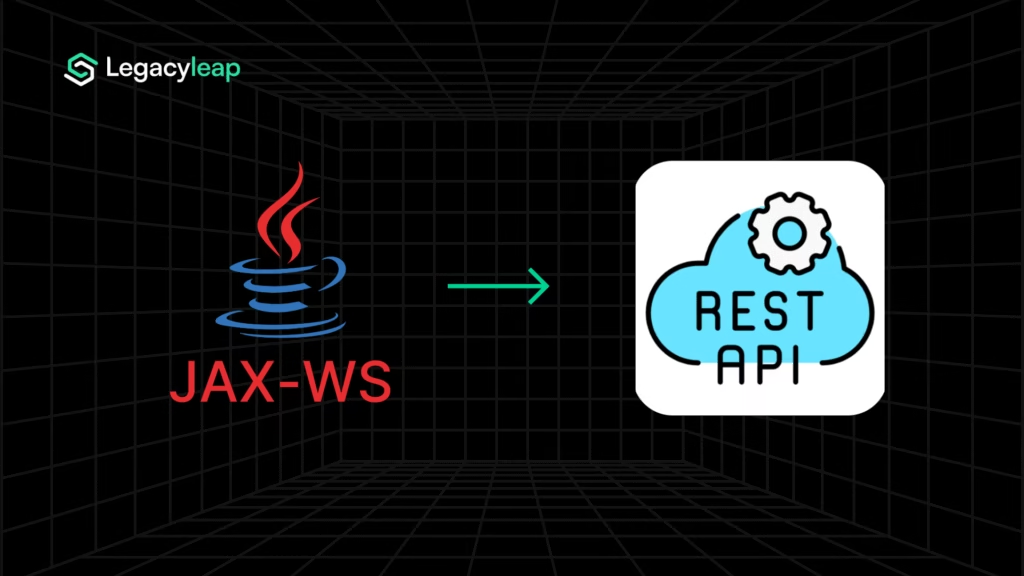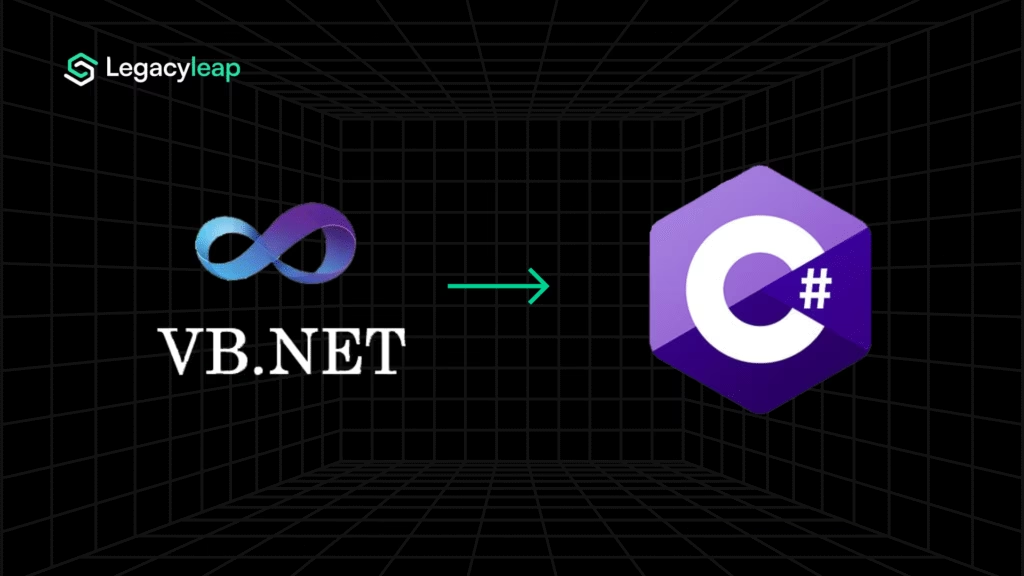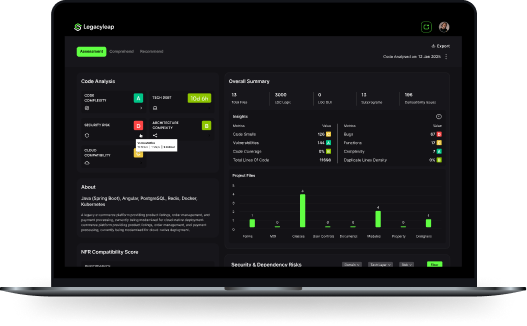Introduction: Why Enterprises Must Move Beyond Monoliths
For years, monolithic Java applications have powered critical enterprise systems, from financial platforms to large-scale ERPs. Their simplicity once made sense as a single deployable unit, one build pipeline, one database. But today, that very simplicity has become a limitation.
Modern digital ecosystems demand speed, scalability, and autonomy, qualities a monolith can’t easily deliver. Updates are slow, scaling one feature means redeploying the entire system, and ownership across teams is tangled.
As systems grow, the complexity compounds with longer release cycles, higher regression risk, and infrastructure costs that don’t scale linearly.
For CTOs and engineering leaders, the trade-off is clear. Staying with a monolith keeps operations predictable but inflexible. Moving to a modular, service-oriented architecture enables independent scaling, faster releases, and domain-aligned ownership, all critical for modern DevOps and cloud strategies.
The challenge lies in doing it safely. Breaking a monolith without breaking the business requires visibility, governance, and precision, something Gen AI-driven modernization now makes possible at scale.
How Microservices Transform Java Monoliths
Migrating from a monolith to microservices is an organizational transformation. It changes how teams design, build, deploy, and own software. The shift introduces autonomy and speed but demands discipline in architecture and process.
| Capability | Java Monolith (Legacy) | Microservices (Modern) | Enterprise Impact |
| Deployment Model | Single deployable unit | Independent services | Enables parallel development and faster releases |
| Scalability | Scale entire system | Scale only high-demand services | Reduces infrastructure cost and improves efficiency |
| Ownership | Shared, intertwined ownership | Clear ownership per domain or team | Improves accountability and team velocity |
| Cloud Readiness | Poor fit for containers | Built for containers and orchestration | Simplifies CI/CD and hybrid-cloud adoption |
| Resilience | Single point of failure | Isolated, resilient service boundaries | Enhances reliability and uptime |
The advantages go beyond architecture. Microservices promote a product mindset where teams own outcomes, not just code. They allow incremental modernization: decomposing systems gradually through well-defined APIs instead of rewriting everything at once.
This modularity becomes the foundation for enterprise agility. But extracting independent services from a million-line monolith is complex, requiring deep dependency visibility and behavioral validation.
Key Challenges and Proven Strategies for Monolith Migration
Breaking a Java monolith into microservices is an architectural unbundling of logic, data, and delivery. Most enterprise monoliths have grown for years, accumulating circular dependencies and shared states that resist change.
The key is to modernize methodically, not disruptively.
Common challenges include:
- Defining service boundaries: Monoliths rarely have clean separation of concerns. Identifying logical seams between modules requires deep analysis of class dependencies, data flow, and domain ownership that are often hidden across layers of code.
- Shared state and data coupling: Many monoliths use a single database schema across multiple modules. Refactoring this shared state into service-specific schemas or API gateways is essential to enable true autonomy without data collisions.
- Dependency untangling: Over years of maintenance, classes and APIs become tightly coupled. Refactoring requires understanding implicit dependencies, internal calls, and cyclic relationships before extracting services safely.
- Testing gaps: Most monoliths lack sufficient integration test coverage, leaving modernization teams without a baseline for behavior comparison. Without automated validation, refactoring risks breaking business-critical workflows.
- Deployment and CI/CD complexity: Moving from one build pipeline to multiple service pipelines demands new orchestration and monitoring models. Each microservice needs its own lifecycle for testing, deployment, and version control.
Proven modernization strategies include:
- Domain-driven decomposition: Use bounded contexts to guide service extraction, aligning services with business domains rather than technical layers.
- Strangler Fig pattern: Introduce microservices incrementally, routing specific functionalities out of the monolith while maintaining coexistence until stability is confirmed.
- Incremental refactoring: Begin with low-risk or high-visibility modules (such as reporting or notifications) to validate tooling, test coverage, and deployment workflows before tackling core systems.
These strategies require more than architectural intent as they depend on accurate visibility. That’s where Gen AI helps enterprises map, decompose, and validate at scale.
How Gen AI Accelerates Java Monolith to Microservices Migration
Traditional monolith-to-microservices migrations are slow, unpredictable, and prone to regression. Every change demands manual tracing of dependencies, repeated testing, and coordination across multiple teams.
Gen AI eliminates this guesswork by automating comprehension, transformation, and validation. Here’s how AI changes the modernization process:
- Automated dependency mapping: Graph-based code analysis scans millions of lines of code to map class relationships, data flows, and API interactions. This forms a complete system graph that highlights potential service boundaries before refactoring begins.
- Intelligent service extraction: Using this dependency map, the AI identifies domain-aligned service candidates and auto-generates boundary recommendations that align with business contexts, accelerating decomposition while preserving logical integrity.
- Refactoring guardrails: Source code is rewritten into Spring Boot microservices or container-ready modules under compiler-level validation. These guardrails ensure structural and functional correctness during every refactoring iteration.
- Functional parity validation: AI-generated regression suites benchmark extracted services against legacy monolith behavior like verifying outputs, API responses, and business logic consistency across modules.
By combining automation with human oversight, Gen AI reduces manual rework by 60–70%, ensures functional parity, and makes modernization predictable rather than experimental.
Legacyleap in Action: Verified Microservices Migration
Legacyleap is built specifically for this complexity, combining Gen AI precision with compiler-grade guardrails and enterprise governance to ensure every migration is safe, measurable, and repeatable.
How the platform enables verified modernization:
- Full-system comprehension: Before extraction begins, Legacyleap maps every class, API, and dependency across the monolith. This dependency graph identifies logical seams, shared resources, and service boundaries that guide refactoring decisions.
- In-enterprise execution: All code analysis and transformation occur entirely within the enterprise environment, ensuring intellectual property, source code, and data remain fully secure and compliant.
- Human-in-the-loop validation: AI recommendations are reviewed by engineers at defined checkpoints. This ensures automated refactoring aligns with architectural intent, domain logic, and coding standards.
- End-to-end modernization assets: The platform doesn’t stop at code generation. It auto-creates service APIs, Swagger documentation, test suites, and Kubernetes manifests, accelerating integration into CI/CD pipelines.
Measured outcomes:
- 100 % visibility into monolith dependencies before refactoring
- 65–70 % automation in service extraction and code transformation
- 90 % + regression-test coverage validating functional parity
- Predictable delivery timelines and verified cutover strategies
Conclusion: A Verified Path to Microservices
Monolithic Java systems once represented reliability; now they represent risk. Every release cycle grows slower, every scaling effort costlier, and every integration more fragile.
Microservices architectures offer the alternative in modular scalability, autonomous development, and true cloud alignment.
The transition, however, must be engineered, not improvised. Legacyleap’s Gen AI-powered platform makes this shift verifiable and repeatable. From dependency mapping to service extraction and regression validation, every step is automated, traceable, and governed by human oversight. The result is faster modernization, lower risk, and measurable impact.
Start with a $0 Microservices Assessment to discover your monolith’s dependency graph, analyze candidate service boundaries, and receive a verified roadmap to enterprise-ready microservices.
FAQs
Data consistency is one of the most critical aspects of microservices migration. Legacyleap’s Gen AI engine analyzes shared-state patterns in the monolith and maps data ownership boundaries before refactoring. During decomposition, it ensures that each service maintains autonomy through schema separation, event-driven communication, and transactional boundaries. Functional parity is validated through AI-generated regression tests to confirm that distributed data behavior matches legacy outputs.
Common pitfalls include over-fragmenting services too early, duplicating shared logic, and neglecting dependency mapping before extraction. Legacyleap helps teams avoid these by visualizing dependency graphs upfront, identifying logical service seams, and enforcing refactoring guardrails. The platform ensures every extracted service is domain-aligned, independently deployable, and verifiably tested, preventing the creation of “distributed monoliths.”
While microservices introduce lightweight modularity, poor decomposition can add network overhead or latency. Legacyleap’s approach mitigates this by maintaining clean service boundaries, optimizing API calls, and ensuring asynchronous workflows where possible. The result is improved scalability and responsiveness, measured through controlled service-level validation during and after migration.
Yes. Gen AI excels at handling large, legacy Java estates where manual analysis is impractical. It adapts to different architectures, from layered monoliths to modularized hybrids, by auto-mapping dependencies, identifying refactoring opportunities, and validating outcomes through regression testing. Combined with human-in-the-loop oversight, this ensures safe, verifiable modernization across both legacy and semi-modern codebases.
Security in a distributed environment requires service-level governance rather than centralized control. Legacyleap enforces this by generating security mappings during decomposition by identifying authentication and authorization flows tied to each new service. Modern practices like OAuth2, JWT, and zero-trust communication policies are integrated into generated API layers and Kubernetes manifests to maintain compliance and secure inter-service communication.


